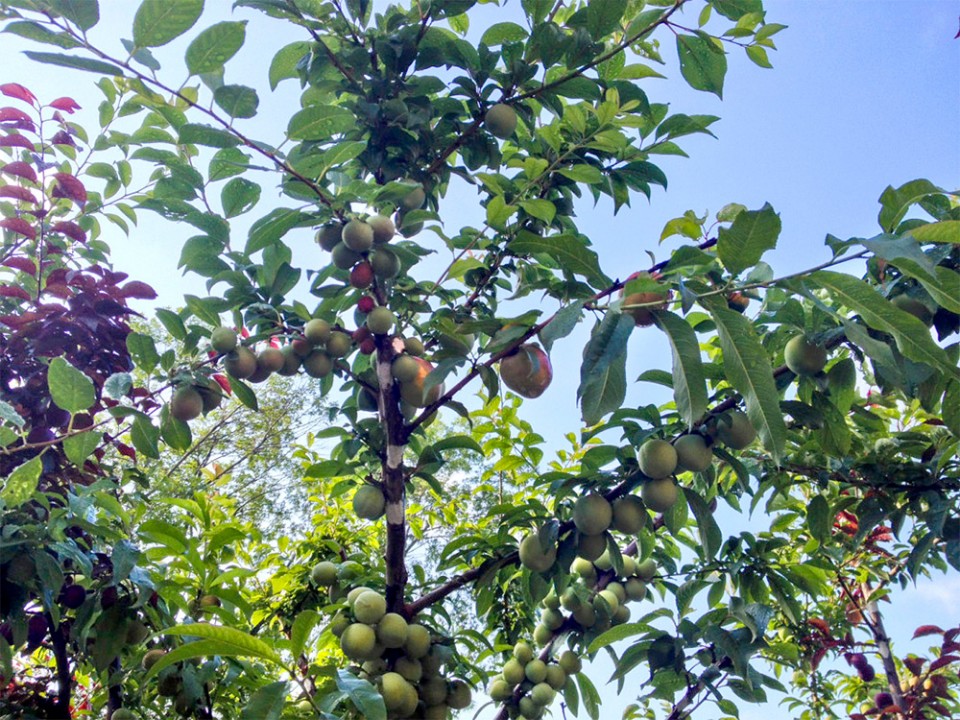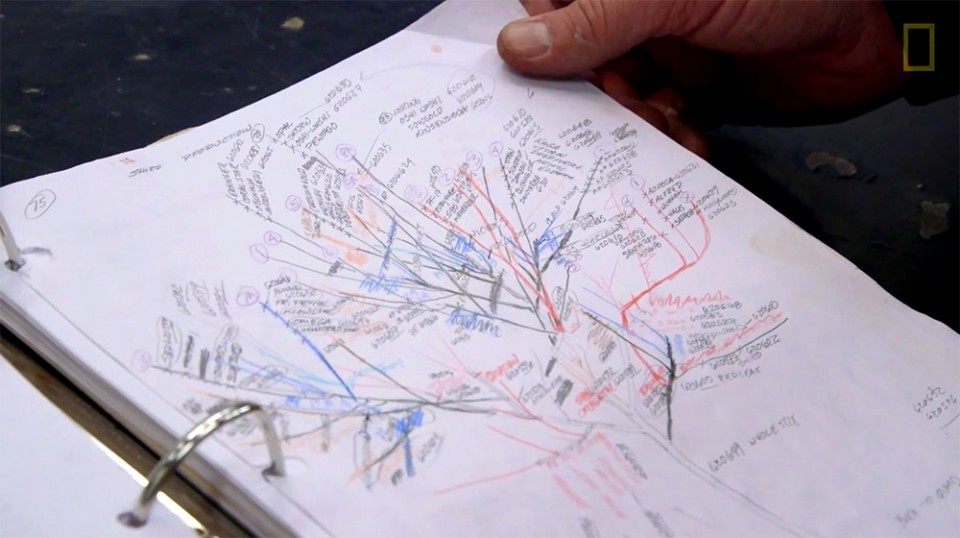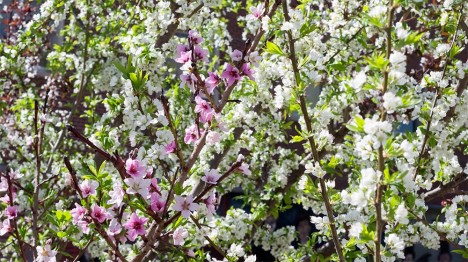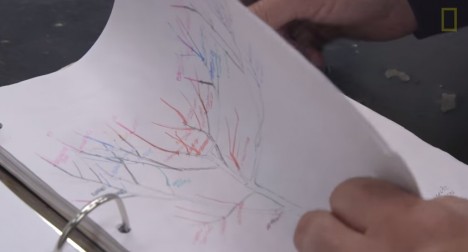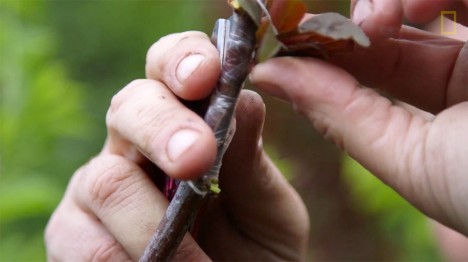Seven years into his experiments, the living artworks of Sam Van Aken are bearing far more than just fruit, each new variant of the Tree of 40 Fruit building on experiences learned from the last. And while simply grafting forty fruits of different kinds to a single tree is impressive, his work continues to branch out. The trees have to grow for three years before he can start to reshape them, and even then only so many grafts can be added each year.
Van Aken’s Frankensteinian creations are an endeavor forever in progress. With increasingly refined sets of controls and directions, he has been able to go beyond simply grafting dozens of types on a single tree. Carefully diagrammed, his planned plants can be designed to bloom and bear fruit year-round and in choreographed sequences, almost like a slow-motion fireworks display or performance piece.
His individual trees are displayed around the country, reflecting the climate as well as local varieties of the different regions in which they can be found. Each provides seasonal moments of surprise to passers by, producing almonds during one month then perhaps peaches or plums (or both) in the next.
From National Geographic: “Sam Van Aken, an artist and professor at Syracuse University, uses ‘chip grafting’ to create trees that each bear 40 different varieties of stone fruits, or fruits with pits. The grafting process involves slicing a bit of a branch with a bud from a tree of one of the varieties and inserting it into a slit in a branch on the ‘working tree,’ then wrapping the wound with tape until it heals and the bud starts to grow into a new branch. Over several years he adds slices of branches from other varieties to the working tree.”
“In the spring the ‘Tree of 40 Fruit’ has blossoms in many hues of pink and purple, and in the summer it begins to bear the fruits in sequence—Van Aken says it’s both a work of art and a time line of the varieties’ blossoming and fruiting. He’s created more than a dozen of the trees that have been planted at sites such as museums around the U.S., which he sees as a way to spread diversity on a small scale.”
